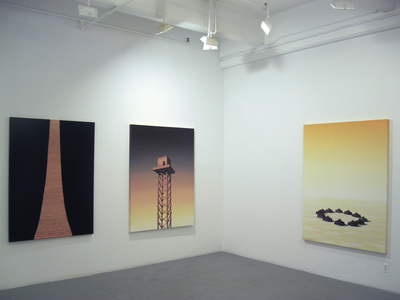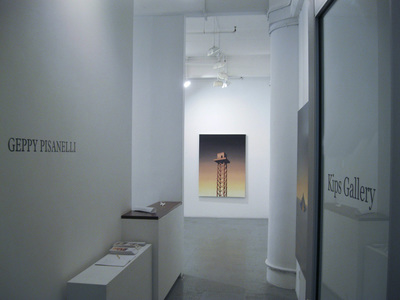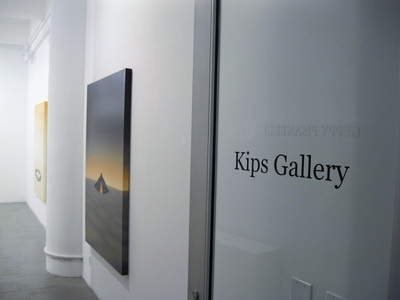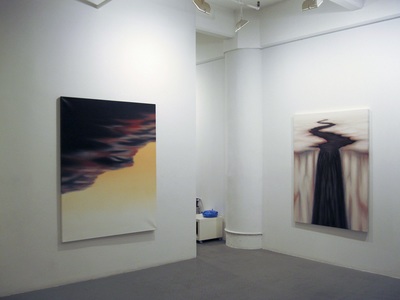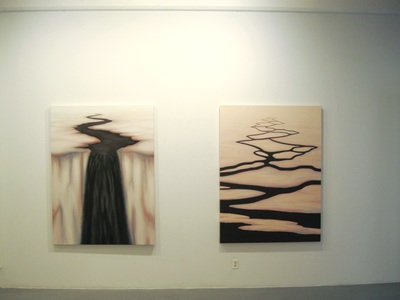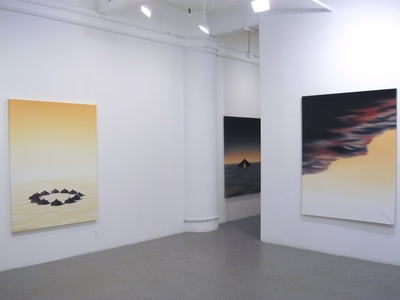Terre di nessuno, Kips Gallery, New York, 2013
Kips gallery is pleased to present Terre di Nessuno (No Man's Lands) an exhibition of recent paintings by Italian artist Geppy Pisanelli who has lived and worked in New York since 2007. This will be the artist’s second solo exhibition with the galleryand his third solo show in New York.The opening reception will be held on Thursday, May 2, 2013 from 6:00 to 8:00 pm. During the opening at 7:00 pm, will be a performance of Metropolitan Opera House’s violinist, Pathmore Lewis.
The large oils on canvas displayed at the gallery emphasize the stylistic touch of the artist: drawing as the foundation of a rigorously constructed image, strong chromatic contrasts and a clear and refined conceptual component.
At first glance, the subjects depicted in Terre di Nessuno may seem to be part of reality. However, they do not reproduce it. They represent a starting point guiding the viewer towards another dimension, a mental space, a "no man's land," where the images may take on different meanings. The observer's analysis in the interpretation of the work may refer to its content or to its formal structure. For example, the painting Suspended Bridge depicts a suspended wooden bridge against a dark background. The bridge is commonly regarded as a connecting element, uniting two different sides. In this context, the beginning and end of the bridge are out of the field of view, there are no reference points and everything is "enshrouded in black." The initial meaning starts to shift and the bridge as a connecting point turns into something else: a metaphor for the equilibrium we seek throughout our lives? Or the only certainty we can cling to? The viewer has the last word.
The River is also a quite disconcerting piece. The common idea of river cannot adequately describe the subject of this painting. The marks of its path, its color and the atmosphere where it is immersed appear unnatural. Regarding the content, the image evokes a representation of the infinite, a projection towards the unknown, which does not belong to us, but where we are all headed. On a strictly formal level, if we completely abolish the conceptual sphere and our search for meanings, focusing exclusively on its shape, sign and color, the image may also be read in an abstract key. In conclusion, Pisanelli's sense of research materializes in artwork imposing a continuous semantic shift in all that pertains both the form and the content.
The large oils on canvas displayed at the gallery emphasize the stylistic touch of the artist: drawing as the foundation of a rigorously constructed image, strong chromatic contrasts and a clear and refined conceptual component.
At first glance, the subjects depicted in Terre di Nessuno may seem to be part of reality. However, they do not reproduce it. They represent a starting point guiding the viewer towards another dimension, a mental space, a "no man's land," where the images may take on different meanings. The observer's analysis in the interpretation of the work may refer to its content or to its formal structure. For example, the painting Suspended Bridge depicts a suspended wooden bridge against a dark background. The bridge is commonly regarded as a connecting element, uniting two different sides. In this context, the beginning and end of the bridge are out of the field of view, there are no reference points and everything is "enshrouded in black." The initial meaning starts to shift and the bridge as a connecting point turns into something else: a metaphor for the equilibrium we seek throughout our lives? Or the only certainty we can cling to? The viewer has the last word.
The River is also a quite disconcerting piece. The common idea of river cannot adequately describe the subject of this painting. The marks of its path, its color and the atmosphere where it is immersed appear unnatural. Regarding the content, the image evokes a representation of the infinite, a projection towards the unknown, which does not belong to us, but where we are all headed. On a strictly formal level, if we completely abolish the conceptual sphere and our search for meanings, focusing exclusively on its shape, sign and color, the image may also be read in an abstract key. In conclusion, Pisanelli's sense of research materializes in artwork imposing a continuous semantic shift in all that pertains both the form and the content.
